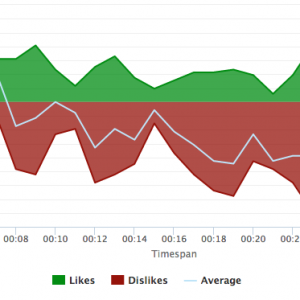Exploring Methodologies for Market Research

Market research is a crucial component of any business or organization that aims to understand its customers, competitors, and opportunities. By conducting thorough research, companies can better understand their target markets, identify consumer needs and preferences, and make informed business decisions. There are several methodologies used in market research to gather data and insights, and in this article, we will explore them all.
Understanding the Importance of Market Research
Before delving into the different methodologies for market research, it is important to understand why it is essential for businesses. Market research helps companies make informed decisions about their products or services, marketing strategies, and overall growth. It also assists in identifying unmet consumer needs or potential gaps in the market that can be exploited for a competitive advantage.
Market research is a critical component of any successful business strategy. It provides valuable insights into the market, the competition, and the needs and preferences of consumers. Without market research, companies risk making decisions based on assumptions or incomplete information, which can lead to costly mistakes and missed opportunities.
Identifying Market Opportunities
One of the main objectives of market research is to identify opportunities for growth and expansion. By analyzing market trends and consumer behavior, businesses can identify untapped or underserved market segments and develop products or services that address their needs. This can lead to increased revenue and market share.
For example, a company that sells organic baby food may conduct market research to identify a potential market segment of health-conscious parents who are willing to pay a premium for high-quality, organic baby food. By developing a product that meets the needs of this market segment, the company can gain a competitive advantage and increase its revenue.
Analyzing Competitors
Market research also involves analyzing the competition to understand what they offer, their strengths and weaknesses, and how they are perceived by consumers. By gathering this information, companies can better position themselves in the market and develop strategies to gain a competitive advantage.
For example, a company that sells athletic shoes may conduct market research to analyze the competition and identify gaps in the market. They may discover that there is a demand for high-performance shoes that are also stylish and fashionable. By developing a product that meets these needs, the company can differentiate itself from its competitors and attract a new segment of customers.
Uncovering Customer Needs and Preferences
Conducting market research also helps businesses understand their customers’ needs and preferences. This can be done through surveys, focus groups, and other qualitative research methods. By gathering insights into what consumers want and need, businesses can develop products and services that better meet their needs and improve customer satisfaction.
For example, a company that sells skincare products may conduct market research to understand the needs and preferences of its customers. They may discover that their customers are looking for products that are all-natural and free of harmful chemicals. By developing a product that meets these needs, the company can improve customer satisfaction and loyalty.
Overall, market research is a critical tool for businesses of all sizes and industries. It provides valuable insights into the market, the competition, and the needs and preferences of consumers. By conducting market research, companies can make informed decisions, develop effective strategies, and gain a competitive advantage in the marketplace.
Quantitative Research Methods
Quantitative research methods involve the use of numerical data and statistical analysis. This type of research is often used to gather large amounts of data quickly and efficiently. It is commonly used in various industries, such as marketing, finance, and healthcare, to make informed decisions.
Surveys and Questionnaires
Helpful companies such as Spot Trender use surveys and questionnaires in market research to collect data from a large number of people. Typically, surveys are conducted using online or paper forms, and respondents are asked to answer a series of questions. The data gathered can then be analyzed to identify trends and patterns among different groups. Surveys can be used to gather information about consumer preferences, opinions, and behaviors. They can also be used to collect demographic information, such as age, gender, and income.
For example, Spot Trender may conduct a survey to gather information about customer satisfaction with their products or services. The survey may ask questions about the quality of the product, the price, and the overall experience. The data collected can be analyzed to identify areas for improvement and to make informed business decisions.
Structured Interviews
An alternative to surveys, structured interviews are a form of quantitative research that involves asking a set of standardized questions to respondents. This method is often used when the questions require a more detailed response than can be obtained from a multiple-choice question. Structured interviews can be conducted in person, over the phone, or via video conference.
For example, a healthcare provider may conduct structured interviews with patients to gather information about their medical history, symptoms, and treatment preferences. The data collected can be used to develop personalized treatment plans and improve patient outcomes.
Observational Research
Observational research involves directly observing consumers in their natural environment. Researchers may use tools such as cameras or video recording devices to capture data. This type of research can provide valuable insights into consumer behavior and preferences.
For example, a retail store may conduct observational research to gather information about how customers navigate the store and interact with products. The data collected can be used to optimize store layout and product placement to improve sales.
Experimental Research
Experimental research involves manipulating a variable to observe the effect on another variable. This type of research can be useful in testing hypotheses and identifying cause-and-effect relationships.
For example, a pharmaceutical company may conduct experimental research to test the effectiveness of a new drug. The company may administer the drug to a group of patients and compare the results to a control group that did not receive the drug. The data collected can be used to determine the efficacy and safety of the drug.
In conclusion, quantitative research methods are an essential tool for gathering data and making informed decisions in various industries. Surveys, structured interviews, observational research, and experimental research are all valuable techniques for collecting and analyzing numerical data.
Qualitative Research Methods
Qualitative research methods involve gathering data that is not numerical in nature. This type of research is often used to gather subjective opinions and perceptions.
Qualitative research is an important tool for understanding the complexities of human behavior and experience. Unlike quantitative research, which focuses on numerical data and statistical analysis, qualitative research is concerned with exploring the subjective experiences, attitudes, and perceptions of individuals and groups.
Focus Groups
Focus groups involve gathering a small group of people to discuss a particular topic. A moderator asks a series of questions, and participants are encouraged to share their thoughts and opinions. Focus groups can provide valuable insights into consumer perceptions and attitudes.
Focus groups have become a popular tool for market research, as they allow researchers to gather detailed information about consumer preferences, opinions, and attitudes towards products and services. By bringing together a diverse group of participants, focus groups can provide a rich source of data that can help businesses to better understand their target audience.
In-depth Interviews
In-depth interviews are similar to structured interviews but are more open-ended, allowing respondents to provide more detailed responses. This type of research is often used to gather rich data about a particular topic.
In-depth interviews are a valuable tool for exploring complex issues and understanding the perspectives of individuals in depth. They can be used to gather data on a wide range of topics, from consumer behavior to social issues and political attitudes.
Ethnographic Research
Ethnographic research involves immersing a researcher in the environment where the behavior or activity of interest occurs. This allows researchers to observe consumer behavior first-hand and gain a better understanding of the social and cultural context that influences their behavior.
Ethnographic research is often used to study cultural practices, social norms, and other aspects of human behavior that are difficult to capture through other research methods. By immersing themselves in the culture or community being studied, researchers are able to gain a deep understanding of the context in which behavior occurs.
Case Studies
Case studies involve analyzing a particular situation or event in-depth. They can be useful in understanding consumer behavior and attitudes within a specific context.
Case studies are often used in business and marketing research to understand how consumers interact with products and services in real-world situations. By examining a specific case in detail, researchers can gain insights into the factors that influence consumer behavior and decision-making.
Overall, qualitative research methods offer a powerful tool for understanding the complex and diverse nature of human behavior and experience. By gathering rich, detailed data on subjective experiences and attitudes, researchers can gain a deeper understanding of the world around us and develop more effective strategies for addressing social, cultural, and business challenges.
Mixed-Methods Research
Mixed-methods research refers to research that combines quantitative and qualitative research methods. This approach can provide a more comprehensive understanding of a particular topic.
Market research is an essential tool for businesses looking to gain insights into their customers and the market. By understanding consumer behavior, attitudes, and perceptions, businesses can make informed decisions about product development, marketing strategies, and more.
Combining Quantitative and Qualitative Approaches
Combining quantitative and qualitative research methods can provide a more complete understanding of a particular topic. For example, a survey may be used to gather numerical data about consumer behavior, while focus groups may be used to gather qualitative data about consumer attitudes and perceptions.
Quantitative research methods involve collecting numerical data through surveys, polls, and other quantitative techniques. Qualitative research methods, on the other hand, involve collecting non-numerical data through interviews, focus groups, and other qualitative techniques.
By combining these two approaches, researchers can gain a more comprehensive understanding of a particular topic. For example, a survey may reveal that a majority of consumers prefer a certain type of product, while focus groups may reveal why consumers prefer that product and what features they value most.
Sequential Explanatory Design
Sequential explanatory design involves conducting qualitative research first, followed by quantitative research. This approach allows researchers to gain a comprehensive understanding of the topic before collecting numerical data.
For example, a researcher may conduct a series of interviews with consumers to gain insights into their attitudes and perceptions about a particular product. The researcher can then use this qualitative data to develop a survey that collects numerical data about consumer behavior.
This approach can be particularly useful when the topic is complex or not well understood. By first gaining a deep understanding of the topic through qualitative research, researchers can develop more effective surveys and collect more meaningful data.
Sequential Exploratory Design
Sequential exploratory design involves conducting quantitative research first, followed by qualitative research. This approach can help researchers identify areas where qualitative research is needed to gain a more complete understanding of the topic.
For example, a researcher may conduct a survey to collect numerical data about consumer behavior. If the results of the survey reveal unexpected findings or trends, the researcher may then conduct focus groups to gain a deeper understanding of why consumers behave in a certain way.
This approach can be particularly useful when the topic is well understood, but unexpected findings or trends emerge during the quantitative research phase.
Concurrent Design
Concurrent design involves conducting both quantitative and qualitative research simultaneously. This approach can be useful in identifying trends and patterns while also gaining a deep understanding of consumer attitudes and perceptions.
For example, a researcher may conduct a survey to collect numerical data about consumer behavior while also conducting focus groups to gain qualitative insights into consumer attitudes and perceptions.
This approach can be particularly useful when time and resources are limited, and researchers need to collect both quantitative and qualitative data quickly.
In conclusion, there are several methodologies used in market research to gather data and insights. Each methodology has its strengths and weaknesses, and the choice of methodology will depend on the research objectives and the data needed. By conducting thorough market research using appropriate methodologies, businesses can gain a competitive advantage by understanding their customers, competitors, and market opportunities.








